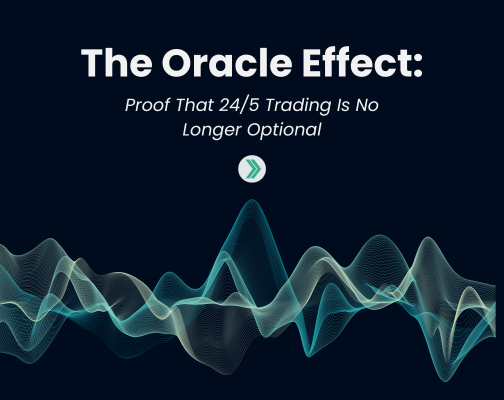How Chi-X Has Changed Australia’s Market Landscape
With longtime relationships with the US and UK, as well as strengthened ties to markets throughout Asia, Australia is a logical base for global firms seeking to raise their profile in APAC. The Australian Securities Exchange (ASX) is the largest exchange in the country, with about 84% of total dollar turnover of Australian equities. But in less than a decade, competitor Chi-X Australia, has grown from zero volume to that other 16%—and the exchange now comprises more than a quarter of all equity trades per day.
Those trading on the ASX are already experiencing the effects of Chi-X’s competition, whether they trade on Chi-X or not. In its first year after opening in 2011, an independent study estimated that Chi-X saved traders anywhere from AU$32 million to AU$215 million (USD 20.9 million to USD 140.2 million), through a combination of reduced trading fees and tighter bid-ask spreads.
It pays to understand how Chi-X Australia works, since its innovative products and trading practices frequently prompt a competitive response from the ASX that can provide opportunities for firms on both exchanges.
A Comparison of Australian Exchanges
Chi-X Australia is a part of Chi-X Asia-Pacific, an alternative market operator that also runs four proprietary trading systems in Japan (and previously owned similar venues in Europe and Canada that since have been acquired by Cboe-Bats and Nasdaq).
Like ASX, Chi-X is a regulated exchange. It entered the Australian market as an alternative venue for trading all ASX-listed companies. Two other Australian exchanges, the Sydney Stock Exchange and National Stock Exchange, are listing exchanges, but they don’t offer trading of any ASX-listed securities like Chi-X provides.
Chi-X relies on ASX’s Clearing House Electronic Sub-Register System (CHESS) for clearing and settlement, so Chi-X serves as both ASX’s competitor and its customer. One result of this arrangement is that equities purchased on either exchange can be sold on the other. Currently, all of Chi-X’s trading members also trade on the ASX, so they can send clients’ orders to either venue and ensure best execution. Further optimization can be achieved through Chi-X’s integrated order book, which routes orders between its lit venue and its Chi-X Mid-Point dark venue.
The Chi-X dark pool attracts a higher percentage of high-frequency trading than does ASX’s dark pool, called Centre Point. One attraction is likely Chi-X Mid-Point’s lower fees. In anticipation of Chi-X’s opening, ASX cut its trading fees in 2010, but they remain higher than Chi-X’s fees. Unlike ASX, Chi-X does not charge more for trades in its dark pool. ASX also operates a PureMatch platform, a low-latency order book for trading its most liquid equities and ETFs.
Table 1. Trading Fees for Equities trades on Chi-X and ASX in basis points (bps)
| Type of Trade | Market Type | Passive(Liquidity Maker) | Aggressive(Liquidity Taker) |
| Chi-X | Lit | 0.06 | 0.12 |
| Chi-X Mid-Point | Dark | 0.06 | 0.12 |
| Chi-X MatchPoint | Market on Close | 0.15 | 0.15 |
| ASX | Lit | 0.15 | 0.15 |
| ASX Centre Point | Dark | 0.50 | 0.50 |
| ASX PureMatch | Lit | 0.15* | 0.15 |
| ASX Auction: Equities | Auction | 0.28 | 0.28 |
| ASX Auction: Warrants | Auction | 0.31 | 0.31 |
Firms operating on both exchanges must be attuned to nuances in their trading hours, particularly in the pre- and post-market periods.
During ASX’s 7-10 am AEST pre-open, participants can enter orders but not execute trades. At 10 am, ASX holds a staggered opening, with securities opening in five groups based on their alphabetical ASX code. This opening takes 10 minutes total. Normal trading runs through 4 pm. From 4-4:10 pm, trading halts and participants prepare orders for the closing single price auction, which runs from 4:10-4:12 pm.
Chi-X opens at 9:50 am for all derivative warrants except those based on ASX equities. Equities, equity warrants, and all other products begin trading at 10 am. Continuous trading runs through 4:13 pm, until Chi-X’s market-on-close period.
In 2019, the exchange introduced the market-on-close procedure, called MatchPoint, which allows participants to place anonymous orders throughout the trading day, from 10 am-4:20 pm. These hidden market-on-close orders execute at the end of ASX’s trading day at the closing price, allowing traders to execute large-volume trades without impacting the ASX closing price.
Products Offered on Chi-X
In addition to providing additional liquidity for Australian equities, Chi-X Australia offers lines of derivative, index, and ETF products. Additionally, they offer Transferable Custody Receipts (TraCRS) to allow Australian investors unique access to invest in some of the most popular US companies.
- Warrants – Like ASX, Chi-X offers several types of derivative warrants. Unlike equities, these are not fungible, so a warrant purchased on Chi-X can only be sold on the same exchange. Warrant contracts have variable terms set by the issuer, as opposed to standardized options terms. Among the most popular Chi-X warrants are MINIs, which allow investors to choose a level of leverage, or gearing, and pay a relatively small upfront cost.
- Indices – The Chi-X 200, which measures the performance of the 200 largest Australian companies, is sponsored by Chi-X and administered by the Singapore Stock Exchange. The free-floating market capitalization-weighted index captures about 80% of the Australian equity market.
- Funds – Chi-X offers its own exchange-traded funds (ETFs), as well as quoted managed funds (QMFs), which are actively managed ETFs.
- Transferable Custody Receipts (TraCRs)—Chi-X’s newest product offering in partnership with Deutsche Bank, TraCRs allow Australian customers to invest in American companies on Chi-X, using Australian dollars (AUD). Deutsche Bank holds the share of US stock for the benefit of the TraCR issuer (also Deutsche Bank, through an Australian subsidiary). By investing in a TraCR, an Australian investor gains a beneficial interest in the underlying stock, one that can be traded on Chi-X, in AUD. Companies include some of the biggest US names, including Apple, Amazon, Exxon Mobil, and Disney. For global broker-dealers or portfolio managers expanding in Australia, TraCRs provide a unique offering to new Australian clientele.
Getting Started on Chi-X Australia
Chi-X Australia wants participation in its exchange to be “low-friction,” so companies can connect to it and trade on it easily and relatively inexpensively.
There are no application or annual fees to be a trading participant. A firm must complete an application that includes detailed information about their business and physical trading system. They also must make clearing and settlement arrangements through CHESS.
The exchange is located in the Equinix data center in Sydney, home to a number of Australia’s biggest market data vendors. Firms already co-locating with ASX in the nearby Australian Liquidity Centre can connect to Chi-X through the ASX Net fiber network, which runs to the Equinix data center.
The monthly fee for direct access to Chi-X Australia’s real-time market data feed (CHIXMD) via unicast networking is AU$700 (USD 457) for internal use, AU$1,400 (USD 913) for external distribution.
Firms with speed sensitive strategies should consider co-locating with Chi-X, in addition to using ticker plant solutions with powerful price aggregation features. Exegy offers ticker plant solutions with multiple user-defined views of pan-market pricing. These low-latency solutions are available as hardware-accelerated appliances or software ticker plants that can be installed on commodity hardware. Less latency-sensitive traders can access the CHIXMD feed via the Internet or cross-connect through a feed vendor.
Continued competition between Chi-X Australia and the Australian Securities Exchange is likely to result in more new products and further changes to the Australian market landscape. The decision your firm makes about its use of Chi-X may change along with them. Our Hong Kong-based sales, service, and engineering staff is experienced in crafting solutions for firms of all sizes and strategies. To map out a plan for your organization, request a consultation.




